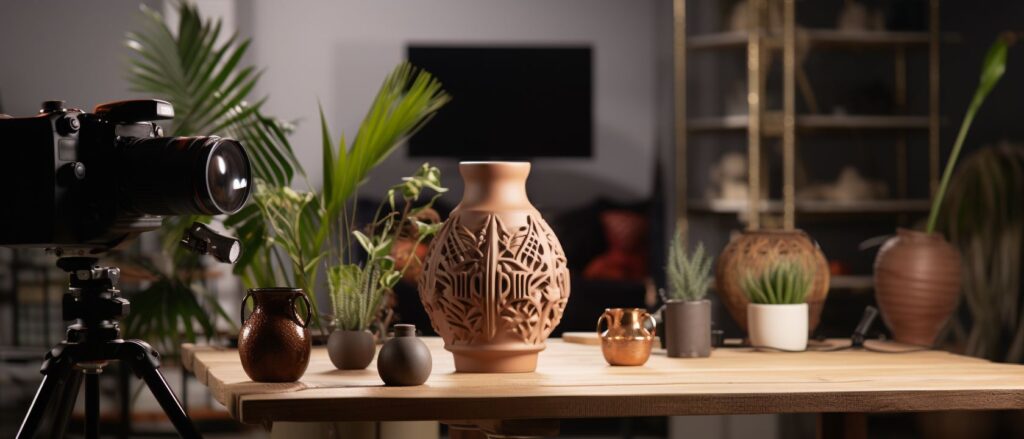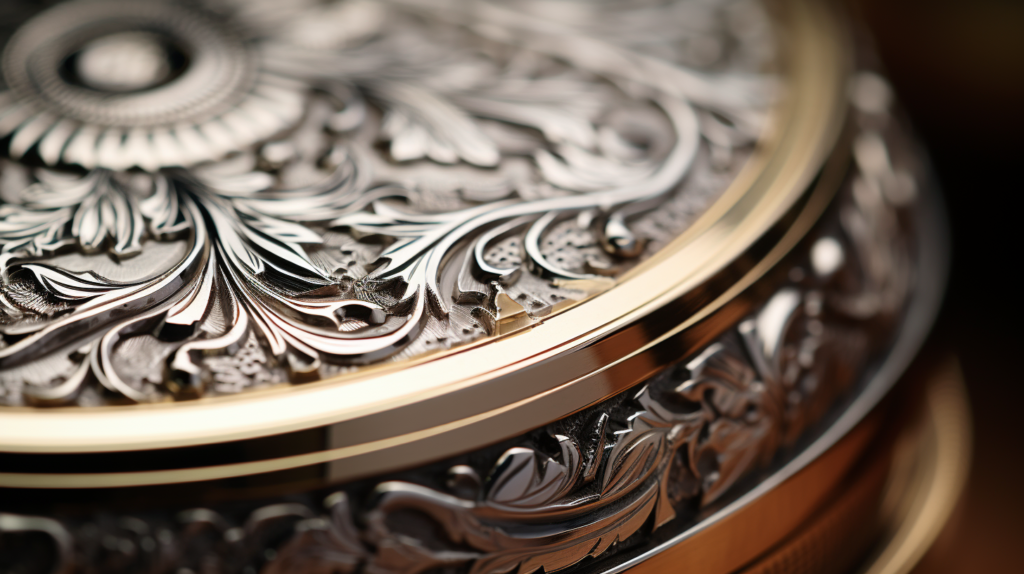
Introduction
Introduction When it comes to showcasing products in the best possible light (pun intended), mastering the art of product photography lighting techniques is essential.
The right lighting can make all the difference in capturing the true essence and allure of a product, whether it’s a delectable dish, a shiny piece of jewelry, or a beautifully crafted wooden furniture. In today’s highly visual world, where online shopping reigns supreme, high-quality product photography has become more important than ever.
Customers rely on eye-catching images to make purchasing decisions, and well-lit photos can make products look irresistible. But where do you start?
How do you ensure that your product photography stands out from the competition? Well, fear not!
In this article, we’ll delve into the intricacies of product photography lighting techniques and equip you with valuable insights that will elevate your skillset. To embark on this creative journey, it’s crucial to understand the core components of product photography lighting.
Whether you’re shooting in a professional studio setup or working with limited resources at home, having a grasp of essential lighting equipment will set you on the right path. From umbrellas and softboxes to continuous lighting and strobes, each tool has its unique benefits and applications.
Once you have your gear sorted out, it’s time to explore various lighting setups tailored specifically for product photography. From simple yet effective setups like three-point lighting (using key lights, fill lights, and rim lights) to more nuanced techniques like Rembrandt lighting that adds depth and drama to your shots – there are plenty of options at your disposal depending on the desired mood or effect.
Beyond just illuminating products evenly, skilled photographers often employ advanced techniques to enhance textures and details. Whether you’re trying to capture luscious food or intricate details in jewelry or fabrics – manipulating light angles can accentuate these elements effectively.
Moreover, different materials such as glass or metal may require adjustments in your lighting approach to avoid unwanted reflections or harsh highlights. As a beginner, understanding the basics of product photography lighting is crucial.
By mastering a few key techniques and learning how to adapt them to different products, you’ll be well on your way to creating stunning visuals that showcase your subjects in the best possible light. So, grab your camera, set up your lights, and get ready to dive into the world of product photography lighting techniques!
Core Components of Product Photography Lighting
When it comes to capturing captivating product photographs, lighting plays a crucial role in creating the desired effect. Understanding the core components of product photography lighting is essential for achieving professional-looking results.
Let’s delve into these components and explore how they contribute to the overall quality of your images. One key component is the type of lighting equipment you use.
For beginners, continuous lighting can be a great option as it provides a constant and consistent light source, making it easier to see and adjust the effect in real time. Strobe lighting, on the other hand, delivers powerful bursts of light which freeze motion and are commonly used by professionals in studio settings.
Both options have their advantages, so choose one that suits your needs and budget. Another important element is the placement of lights within your setup.
The key light is typically the primary source that illuminates your subject from one side, providing depth and definition. It can be achieved using various tools such as softboxes or umbrellas to diffuse the light and create a softer effect.
To reduce shadows on one side of your subject, a fill light can be used opposite to the key light at a lower intensity. To add more dimensionality to your product photographs, consider incorporating additional lights such as rim or accent lights.
These lights are positioned behind or at an angle from your subject to create highlights along its edges or contours. This technique works particularly well with products made of reflective materials like metal or jewelry since it enhances their shine and adds visual interest.
Reflectors are indispensable tools that help manipulate light in product photography. By bouncing back some of the main light source towards your subject, reflectors can fill shadows or redirect light towards specific areas you want to highlight.
They come in various shapes and colors – white for neutral reflections, silver for increased brightness, gold for warm tones – allowing you to control how light interacts with different surfaces like wood or fabric. Understanding these core components will lay a solid foundation for mastering product photography lighting techniques.
Experimenting with different setups and adjusting the position, intensity, and angle of your lights will enable you to achieve the desired effect for each unique product. So, grab your camera, lighting equipment, and get ready to create stunning images that truly showcase the beauty of your products!

Essential Lighting Setups for Product Photography
When it comes to product photography, lighting is everything. The right lighting setup can make your products shine and grab the attention of potential buyers.
Here are some essential lighting setups that can take your product photography to the next level. One popular technique is butterfly lighting.
This setup involves placing a softbox directly above and slightly in front of the product, creating a shadow that looks like a butterfly’s wings under the nose. This technique works well for capturing the intricate details and textures of products like jewelry or fabrics.
If you want to create a dramatic effect and highlight the contours of your product, backlighting is a great option. By placing a strong light source behind your subject, you can create a beautiful halo effect around it.
This technique works particularly well for glass or metal products, as it enhances their reflective surfaces and creates interesting patterns. For beginners or those on a budget, continuous lighting can be more practical than strobe lighting setups.
Continuous lights provide a constant source of illumination that allows you to see exactly how your product will look before taking the shot. They are also easier to set up and don’t require additional triggers or synchronization.
Another essential setup is using fill light in conjunction with key light. The key light is the main source of illumination for your subject, while fill light helps soften shadows and provides additional brightness to balance out highlights and dark areas.
This combination ensures that your product looks even and well-lit from all angles. Remember that different products may require specific lighting techniques to bring out their best features.
For example, when photographing fabrics or textiles, using softboxes with diffusers can help minimize harsh shadows and capture fine details in textures. On the other hand, jewelry photography often benefits from pinpointing specific areas with focused lights to enhance sparkle and shine.
Experimenting with different setups will allow you to discover what works best for each type of product you shoot. Don’t forget about post-processing as well!
Even with the perfect lighting setup, a little editing can go a long way in enhancing your product photos. Mastering the essential lighting setups for product photography is crucial to capturing the beauty and intricacies of your products.
Whether you’re shooting jewelry, fabrics, or food, understanding techniques like butterfly lighting, backlighting, and fill light will help you create stunning images that grab attention and drive sales. So grab your softboxes or continuous lights and start experimenting with different setups to uncover the full potential of your products through photography.
Enhancing Product Textures and Details with Lighting
Enhancing Product Textures and Details with Lighting When it comes to capturing the textures and intricate details of products in photographs, lighting plays a crucial role. The right lighting technique can make all the difference in highlighting the unique features of a product and creating visually captivating images.
Let’s explore some effective techniques to enhance textures and details through product photography lighting. One important technique for enhancing textures is the use of rim light.
This technique involves placing a light source behind the subject, creating a soft glow around its edges. By doing so, it separates the product from the background and adds depth to the image.
This works particularly well for subjects like glass or metal, where capturing their reflective qualities is essential. Another useful approach is employing reflectors in tabletop photography.
Reflectors bounce light back onto the subject, reducing shadows and enhancing details. For instance, when photographing jewelry, a reflector can be strategically positioned to reflect light onto gemstones or metallic surfaces, showcasing their brilliance and intricacies.
Using diffused lighting with fabric subjects can create stunning results as well. Fabrics often have different textures that can be brought to life by placing a diffusion material between the light source and the subject.
This softens harsh shadows and highlights fine threads or patterns present in the fabric. In some cases, backlighting can also work wonders for highlighting specific product details.
By positioning a strong light source behind an object, we can create an enticing glow around it while emphasizing its finer points. This technique is commonly used in food photography to make ingredients appear fresh and vibrant.
To achieve these effects effectively, choosing appropriate product photography lighting equipment is vital. Continuous lighting offers versatility as it allows you to see real-time adjustments while setting up your shot.
On the other hand, strobe lighting provides powerful bursts of light that freeze fast-moving subjects without compromising on illumination quality. Remember that post-processing techniques such as product photography editing should complement your lighting efforts rather than compensate for them.
While editing can enhance textures and details, it is best to start with well-lit photographs to maintain authenticity and minimize the need for extensive editing. By experimenting with different lighting techniques, you can truly bring out the hidden beauty and intricacies of your products.
Whether it’s capturing the sparkle of a gemstone or highlighting the delicate threads of a fabric, mastering product photography lighting techniques is an art that takes time and practice. So grab your reflectors, set up your product photography studio, and let your creativity shine through!
Lighting for Different Product Materials
When it comes to product photography, lighting plays a crucial role in bringing out the best features of different materials. Each material has its own unique properties and characteristics, and understanding how to light them properly can make a significant difference in the final result. Let’s start with glass.
Glass can be quite challenging to photograph due to its reflective nature. To capture the beauty of glass objects, it is essential to use diffuse lighting techniques.
One effective approach is to use a scrim or diffuser between the light source and the glass object. This softens the light, reduces glare, and creates a more even illumination across the surface of the glass.
Fabric is another commonly photographed material in product photography. The key here is to highlight its texture and details while avoiding any harsh shadows.
One effective lighting setup for fabric is using a backlight combined with fill light from the front. The backlight helps create separation by illuminating the fabric from behind and accentuating its texture, while the fill light ensures that there are no deep shadows on the front side.
Metallic objects require special attention as well. To emphasize their reflective surfaces, one technique that works well is using rim lighting or side lighting.
This involves placing a strong light source at an angle behind the object, which creates highlights along its edges and adds depth to metallic textures. For jewelry photography specifically, details are everything.
Using strobe lighting with modifiers like softboxes or beauty dishes can help create crisp and focused highlights on gemstones while providing subtle shadows for depth and dimension. Of course, these are just some examples of how different materials can be effectively lit for product photography.
Experimentation with various setups is key when working with unique materials such as wood, plastic, or food items like fruits or baked goods. Remember that having an appropriate product photography studio setup along with quality lighting equipment is essential for achieving professional results.
Continuous lighting setups provide constant illumination for precise control over lighting conditions during a shoot. Understanding the intricacies of lighting for different product materials is vital for achieving outstanding results in product photography.
By using techniques like diffusing light for glass, utilizing backlighting with fabric, employing rim lighting for metal, and focusing on details for jewelry, you can bring out the best in each material. With practice and experimentation, you’ll be able to capture captivating images that showcase the unique qualities of your products.

Advanced Lighting Techniques for Product Photography
Advanced Lighting Techniques for Product Photography When it comes to product photography, mastering advanced lighting techniques can truly elevate your images to the next level. These techniques allow you to create unique and visually striking photographs that capture the essence of your products in a captivating way.
Let’s explore some of these techniques and how they can be applied to different types of products. One popular technique is the use of rim lighting.
This involves placing a light behind the subject, generally at a 45-degree angle from the camera. The light grazes along the edges of the product, creating a subtle highlight that separates it from the background and adds depth.
Rim lighting works particularly well for products with interesting shapes or textures, such as glassware or jewelry. Another technique is butterfly lighting, also known as clamshell lighting.
This involves using two lights placed directly above and below the subject, angled towards each other. The top light acts as a key light while the bottom light serves as fill light.
This setup creates soft, even illumination with minimal shadows, making it ideal for achieving a smooth and clean look on reflective surfaces like metal or shiny plastic. For products that have intricate details or textures that you want to highlight, using a scrim can be incredibly effective.
A scrim is essentially a translucent material placed between your subject and the main light source to diffuse and soften the light. By diffusing harsh shadows and creating an even spread of light across your product, you can bring out its finer details without any distracting reflections or hotspots.
When photographing fabric or other textiles, manipulating natural or artificial light sources can produce stunning results. Experimenting with backlighting by placing lights behind sheer fabrics can create an ethereal glow effect that beautifully highlights its texture and translucency.
Similarly, using side lighting with softboxes can accentuate folds and patterns in fabric materials like silk or linen. Remember that these advanced lighting techniques require careful consideration of your product’s specific needs and characteristics.
It’s essential to experiment and play around with different setups to find the best approach for each product. By mastering these techniques, you’ll be able to create professional-grade product photographs that are visually captivating and truly showcase the unique qualities of your products.
Advanced lighting techniques offer a wide range of creative possibilities for product photography. Whether you’re photographing glassware, wooden furniture, or delicate fabrics, understanding how to manipulate light effectively can make all the difference in capturing stunning images.
From rim lighting to butterfly lighting and using scrims or backlights, each technique can enhance different aspects of your products and add depth and visual interest to your photographs. So don’t be afraid to experiment and explore these techniques – they will undoubtedly take your product photography skills to new heights!
Addressing People Also Ask (PAA) Queries
Addressing People Also Ask (PAA) Queries When it comes to product photography lighting techniques, there are often common questions that arise. Let’s take a moment to address some of the most frequently asked “People Also Ask” (PAA) queries and shed some light on them.
One question that often pops up is, “What is the best lighting equipment for product photography?” Well, the answer depends on your specific needs and budget. For beginners, continuous lighting setups can be a great option as they are affordable and easy to use.
These setups typically consist of softboxes or umbrellas that provide a diffuse and even light source. On the other hand, if you’re looking for more versatility and control over lighting, strobe lighting kits may be worth considering.
These kits use powerful flashes that can freeze motion and deliver consistent results. Another commonly asked question is, “How can I achieve professional-looking lighting without breaking the bank?” One technique you can try is using natural light as your key light.
Natural light has a soft quality that can beautifully illuminate your products without requiring any expensive equipment. You can position your product near a window where natural light streams in and use simple reflectors made of white foam boards or aluminum foil to fill in shadows.
For those wondering about editing techniques for product photography, one essential tip is to shoot in RAW format rather than JPEG. This allows you to capture more information during the image capture process and provides greater flexibility during post-processing.
In terms of editing software, Adobe Lightroom is highly recommended for its user-friendly interface and comprehensive editing tools. Many people wonder how they can photograph reflective surfaces such as glass or metal without unwanted reflections or glare.
To tackle this challenge, an effective approach is using backlighting combined with diffusers or reflectors. By placing a source of light behind your subject and positioning diffusers or reflectors strategically, you can control reflections while still highlighting important details.
Addressing PAA queries is crucial in providing comprehensive information about product photography lighting techniques. Whether it’s finding the right equipment, achieving professional results on a budget, mastering editing techniques, or overcoming challenges with reflective surfaces, having a deep understanding of these topics will help you elevate your product photography game.
Conclusion
Mastering product photography lighting techniques can elevate your images from ordinary to extraordinary. By understanding the core components of lighting and experimenting with different setups, you can enhance the textures and details of your products.
Whether you’re photographing metal, fabric, glass, or wood, there are specific lighting approaches that can bring out their unique qualities. Investing in the right product photography lighting equipment is crucial for achieving professional results.
Consider using continuous lighting for its versatility and ease of use. Additionally, having a variety of light modifiers such as reflectors, umbrellas, and scrims allows you to control the direction and intensity of light to suit different products.
Setting up a dedicated product photography studio is beneficial for consistency and efficiency. Designate specific areas for key light placement, rim light accents, and fill light diffusion.
This setup will provide a consistent look across all your images while allowing room for creativity. Don’t underestimate the power of post-processing in product photography editing.
Refining your images through color correction, sharpening details, and removing imperfections can make your products truly pop off the screen or page. Remember that each product deserves its own unique approach to lighting.
Consider the material it’s made from—whether it’s reflective like glass or has intricate textures like fabric—and adjust your lighting accordingly to highlight its features effectively. With patience and practice, you’ll become adept at using various techniques such as Rembrandt lighting or backlighting to add depth and dimension to your product photos.
Whether you’re a beginner or an experienced photographer looking to up your game in product photography lighting techniques—experimentation is key! So go ahead and let your creativity shine through those lights!
In the ever-evolving world of commerce, product photography has become an indispensable tool for creating captivating visuals that sell. By mastering the art of product photography lighting, you can elevate your product images to new heights, transforming ordinary objects into visual masterpieces that resonate with your target audience.
From understanding the fundamental principles of key, fill, backlight, and rim lights to exploring advanced techniques like using gels, color filters, and slow shutter speeds, this comprehensive guide has provided you with the knowledge and tools to create stunning product photography that showcases your products in their best light.
Remember, lighting is not just about illumination; it’s about storytelling. Use light to sculpt shapes, accentuate textures, and create a sense of depth and dimension. Let your products shine with captivating product photography, and watch your sales soar.
As you embark on your product photography journey, remember that practice makes perfect. Experiment with different lighting setups, explore the unique characteristics of different product materials, and don’t be afraid to push the boundaries of creativity. With dedication and a passion for lighting, you’ll soon be creating product photography that captures attention, ignites desire, and drives sales.



